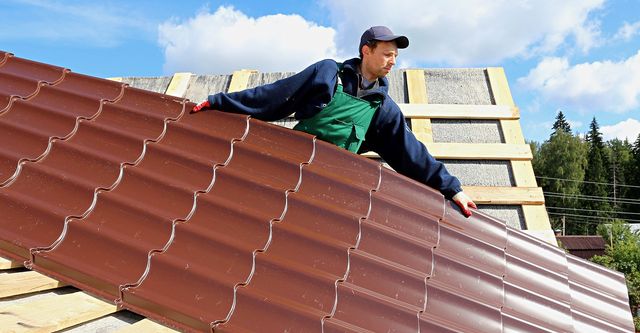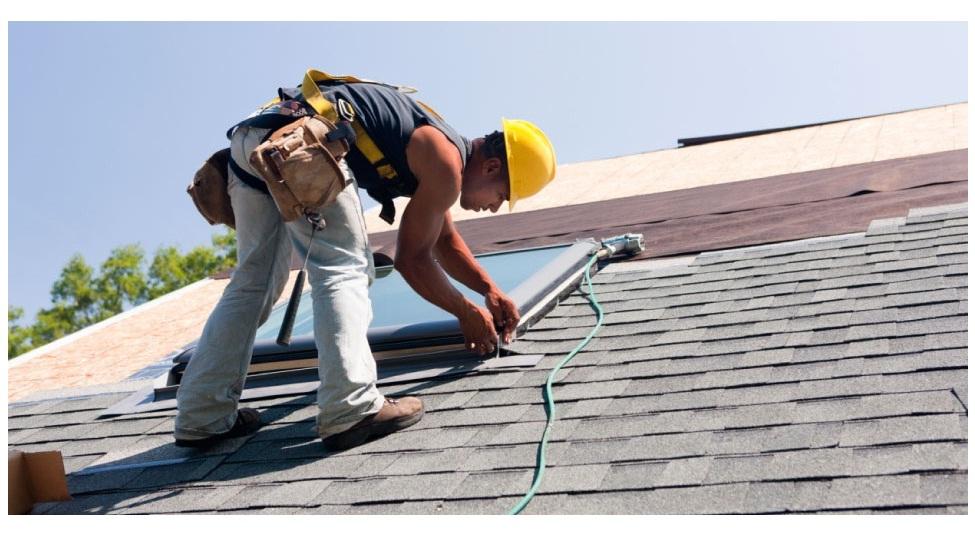A Comprehensive Guide to Effective Roofing Flat Roofing Setup
The ins and outs of flat roof covering setup need a careful approach, starting with an extensive understanding of numerous flat roof covering types and the essential products needed for ideal efficiency. A successful installment hinges not just on the choice of products yet likewise on the prep work and execution of each step entailed in the process.
Recognizing Flat Roofing Kind
When considering flat roofings, it is essential to comprehend the different kinds readily available, as each offers distinctive advantages and drawbacks customized to details needs. The most common types of flat roofings consist of Built-Up Roof covering (BUR), Changed Asphalt, and Single-Ply membrane layers.
Built-Up Roofing is composed of several layers of asphalt and crushed rock, providing exceptional resilience and weather resistance. It is specifically useful in areas susceptible to extreme climate problems yet might need even more maintenance because of its complicated building.
Modified Bitumen is a popular selection for its convenience of installment and adaptability. It usually uses a torch-applied or self-adhesive technique, which can be helpful for quick repairs and long-lasting efficiency. Nevertheless, its lifespan can be much shorter contrasted to BUR.
Single-Ply membrane layers, including Thermoplastic Olefin (TPO) and Ethylene Propylene Diene Monomer (EPDM), are recognized for their light-weight nature and energy efficiency. These products are usually liked for industrial buildings as a result of their cost-effectiveness and simplicity of installation (Cleveland Roofing Specialists). They might not offer the very same degree of insulation as other alternatives.
Each roof kind needs careful factor to consider based on environment, budget plan, and specific job requirements.
Crucial Materials for Apartment Roofing
A variety of necessary materials are vital for the successful setup of flat roof covering systems. The choice of products directly effects sturdiness, efficiency, and general performance.
One of the key materials is the roof membrane, which can be built from numerous substances such as polycarbonate polyolefin (TPO), ethylene propylene diene monomer (EPDM), or PVC. Each kind provides one-of-a-kind advantages, consisting of UV resistance and adaptability, which are important for long term performance.
In addition to the membrane layer, insulation products play a considerable function in power efficiency. Stiff foam boards or polyisocyanurate insulation are preferred choices, as they offer exceptional thermal resistance and wetness monitoring.
Furthermore, roof adhesives and sealers are essential for guaranteeing a water tight installment. These products must work with the selected membrane layer to protect against wear and tear gradually.
Planning For Installation
Proper preparation is vital for an effective level roof covering installment, as it lays the groundwork for a efficient and resilient roof. Begin by carrying out a thorough inspection of the existing roof structure. Look for signs of damages, consisting of leaks, rot, or inadequate water drainage, which might compromise the new roofing system. Guarantee that the hidden products are audio and can sustain the weight of the brand-new roof elements.
Next, gather all essential devices and materials, ensuring that they fulfill market criteria. This includes waterproof membrane layers, insulation, flashing, and bolts. Acquaint yourself with the supplier's specs, as adherence to these guidelines is crucial for service warranty functions.
Additionally, make certain that the workplace is free from debris and blockages to facilitate secure and effective installation. Think about climate condition; avoid installment during hefty rain or severe temperatures, which can impact product efficiency. Notify any kind of residents of the structure about the approaching job to ensure security and decrease disruptions. By taking these primary actions, you can enhance the possibility of an effective level roofing system setup that fulfills both structural and aesthetic needs.
Step-by-Step Setup Process
With the foundation developed via thorough preparation, the next phase involves carrying out the level roofing setup methodically. Begin by making sure that the architectural deck is cost-free and tidy from particles. Next, install a vapor barrier to prevent wetness buildup underneath the roof material. This step is important for preserving the roofing system's stability in time.
Adhering to the vapor obstacle installation, set insulation boards, guaranteeing they fit firmly together to decrease thermal connecting. Secure the insulation with ideal bolts based on the roof covering kind and local building ordinance. Once the insulation remains in place, it's time to use the roof membrane layer. Depending upon the chosen material-- such as TPO, EPDM, or modified asphalts-- set up the membrane according to the supplier's specs.
Mount flashing around perimeters, vents, and any Get More Information type of roofing infiltrations to boost waterproofing. After installation, conduct an extensive examination to recognize any potential issues prior to concluding the project, guaranteeing a trusted and durable level roof covering system.
Upkeep Tips for Long Life
Normal upkeep is vital to guarantee the longevity and performance of a flat roof. One of the primary jobs is to perform regular examinations a minimum of two times a year, preferably check that in spring and fall. During these inspections, look for signs of wear, such as sores, splits, or merging water, which can suggest underlying issues.

Ensuring appropriate water drainage is crucial to stop water buildup. Check and clear rain gutters, downspouts, and scuppers to ensure unhampered water circulation. Additionally, examine seals around vents, skylights, and other penetrations for any type of indicators of deterioration, applying caulk or sealer as needed to maintain a watertight barrier.
Finally, think about expert upkeep solutions every couple of years for detailed inspections and repairs. By adhering to these maintenance tips, you can significantly extend the life of your flat roof, ensuring it continues to be a reliable shield versus the components.
Verdict
Reliable level roofing system installation requires an organized method encompassing extensive inspections, material option, and precise prep work. Adhering to the described actions during the setup procedure ensures the appropriate application of roof covering membranes and insulation while improving waterproofing via effective blinking installment.
The intricacies of flat roof covering installation demand a careful strategy, beginning with an extensive understanding of numerous level roof types and the necessary products needed for optimal performance.Appropriate prep work is crucial for a successful flat roof covering installation, as it lays the foundation for a effective and resilient roof system. After setup, perform a thorough assessment to recognize any kind of possible concerns prior to ending the task, ensuring a reputable and durable flat Get More Info roofing system.
